Mud is one of the challenges of owning a backyard lawn. Rain, draining problems, and heavy foot traffic are the suspects for the muddy patch in your property, Fleas are attracted to moist soil and dogs love playing on it. Only to add more cleaning tasks to your list.
In this article, we’ll help you put the endless cleaning chores to an end by learning how to cover up mud in your backyard. We’ll also share some alternatives if covering the lawn is no longer an option.
Let’s start!
How To Cover up Mud in Your Backyard?
There are a lot of possible ways to end your problems with mud and turn your wasteland-looking yard into a pretty landscape. However, it’s essential to know what causes the water to build up in your backyard in the first place.
Identifying the root cause of the water buildup will help you make a wiser decision on what solution you’ll consider for your backyard. You could also save yourself from spending on lawn covers that will not prevent the mud from building up.
3 Common causes of water buildup in your lawn that may not be solved by lawn covers:
1. Drainage Problems:
Some homes are built with drainage pipes that are directed towards the lawn. The placement of these pipes is intentional in hopes that the rainwater will help water the lawn.
However, too much rain and flat lawns with not enough plants or trees to absorb the water will only end up stagnating the water on the soil. Thus, causing a muddy patch.
If you have this problem, better fix your drainage first unless you’re also planning to landscape the area and turn it into a lush garden.
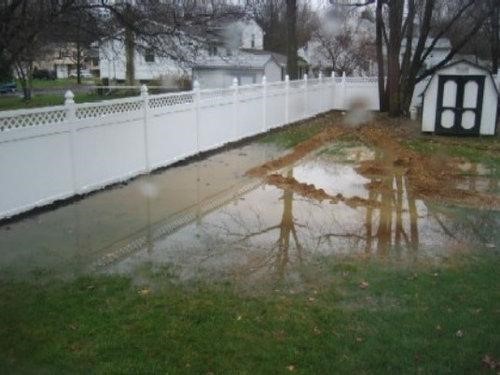
2. Low Terrain
Some properties are not blessed with a flat lawn. So, most of the rainwater accumulates on the lowest terrain of the land and builds puddles that eventually become mud.
Building a gazebo or meditation area is a more practical option for this case. You may also flatten the lawn but that may take more effort and the help of a backhoe to make digging easier for you.
3. Weather
It’s inevitable to have a muddy lawn if you are located in a zone that receives more rainfall than sunlight throughout the year.
In this case, any lawn cover would be a waste and alternative options like building a porch would be the best course.
Now, if you chose to address your mud problem and improve the look of your yard, here are the 10 cover options that you can try:
Option #1: Sod
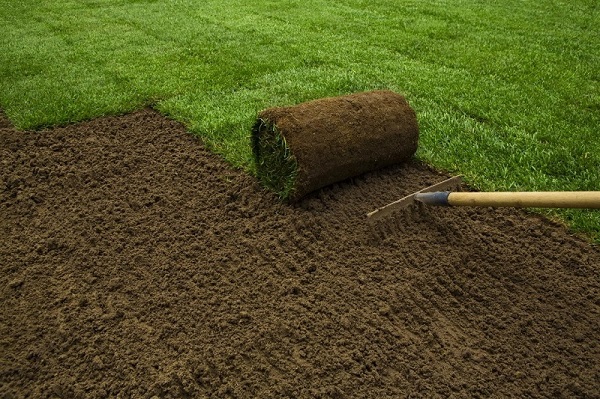
Sod is one of the fastest ways to cover the mud and turn it into a green patch in an instant. It can absorb the excess water on your lawn and improves the soil condition.
However, you will need to prepare the mud before laying the sod to keep it longer.
You can buy sod for at least 8 cents per square foot. So, covering a bigger muddy patch with sod can be heavy on your budget.
If budget is not a problem, then you must make sure the sod survives by tilling, leveling, and keeping the soil moist for the roots to grow well.
Option #2: Creeper Plants
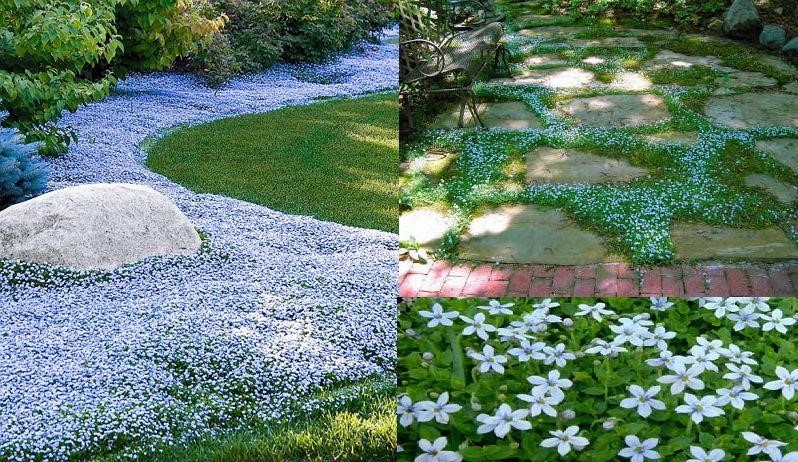
If buying sod is over your budget, you may also try creeper plants. Creeper plants or creepers are viny plants that creep on the ground.
They have soft stems and a bit fragile. This is the best option if the muddy part of your lawn has less foot traffic.
Creeper plants can cover up the mud in your backyard like the ones we see in Disney movies. Some of these creeper plants bloom on the ground which can turn your backyard into a fairytale garden.
These plants are an inexpensive option and you can even get it for free from a generous neighbor or friends. The best types of creepers as ground covers include:
- Creeping Thyme
- Mini Kenilworth
- Candytuft
- Blue Star Creeper
- Clover
- Silver Carpet
- Irish Moss
- Winter Creeper
Option #3: Build a Rain Garden
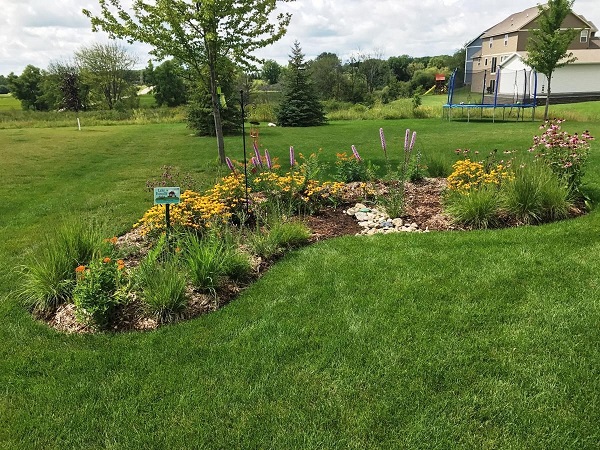
A rain garden is made up of plants that thrive on wet soil and needs more water than other types of plant. This option is an inexpensive way of taking advantage of the water from the mud and designing your backyard at the same time.
To build a garden, you have to prepare the soil first by tilling the mud adding compost and garden soil.
Pro tip: You may put the plant species that need a lot of water in the lowest part of the mud patch. The key is to put the right plant species on the part of the garden based on their water tolerance.
Option #4: Wood Chips or Mulch
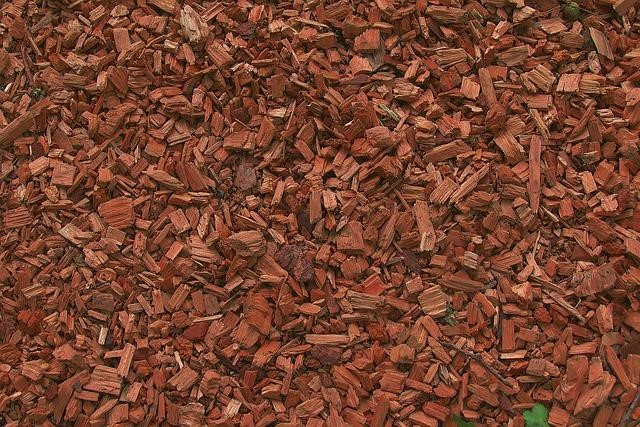
Wood chips are good material for gardening as it helps insulate the soil and serve as a fertilizer when it decomposes. While this option is not a long-term solution, it nourishes the soil that makes it good for growing new plants in the future.
Aside from soil benefits, wood chips also keep the weeds from growing and prevent soil erosion. You can get them for free from tree removal companies. However, be careful of wood chips with harmful pesticides like juglone which is a toxic chemical from walnut trees.
The best types of wood chips that you should use as ground covers are:
- Pine Cedar
- Cypress
Mulch, on the other hand, is a mixture of organic matter like dried leaves, barks, and pieces of wood that are also used as ground covers. It is almost the same wood chips but has a more granulated texture.
There are a lot of misconceptions about using mulch as ground covers that can kill trees and other plants. So be sure that you keep the following in mind:
- Keep the layer of mulch at 4-inches height.
- Avoid mulch build-up at the base of shrubs, to prevent the roots from attaching to the mulch that will decompose eventually.
- Don’t build mulch volcanoes at the foot of the tress because it will speed up the decay of the protective bark, attract rodents, and grow weaker roots.
Option #5: Gravel
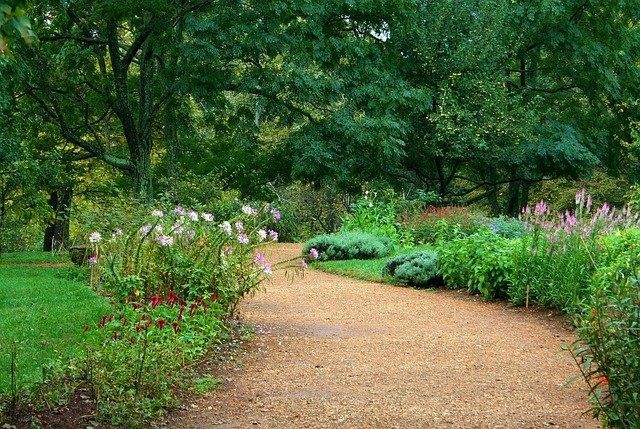
Gravel is also by far one of the easiest ways to cover mud. It’s pleasing to the eyes and can handle heavy foot traffic. It also helps drive away pests and not a suitable material for fungi to grow on.
Gravel also gives the soil a foundation and prevents it from being washed away or erode. The only problem that you have to deal with gravel is when it gets buried in soft mud.
To prevent this, you may use wheat fabric underneath the gravel to keep it from sinking into the mud. You may also use old cardboard as a retaining wall for the gravel.
Option #6: Hay or Straw
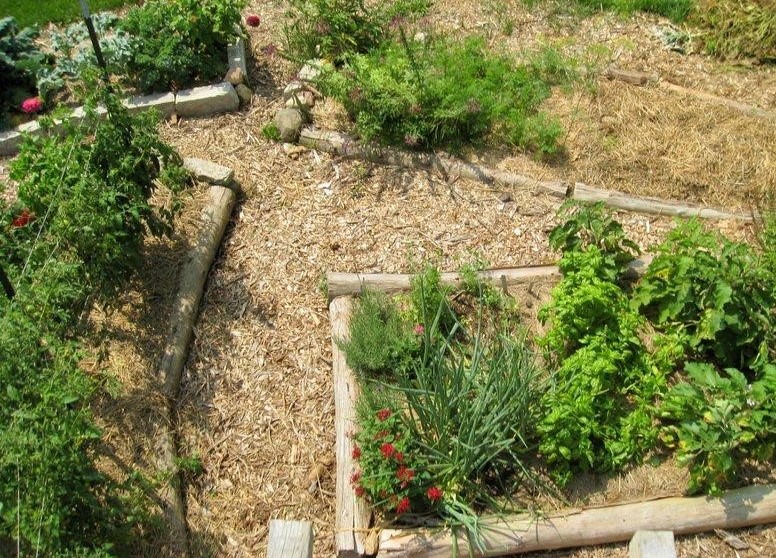
When the soil is too murky, hay or straw can absorb the water from the mud when it gets dry.
Choosing sand as a cover for mud is not a long-term solution but it does the job. The only problem you’ll deal with this method is when the wind blows, so does the hay.
Option #7: Pathway
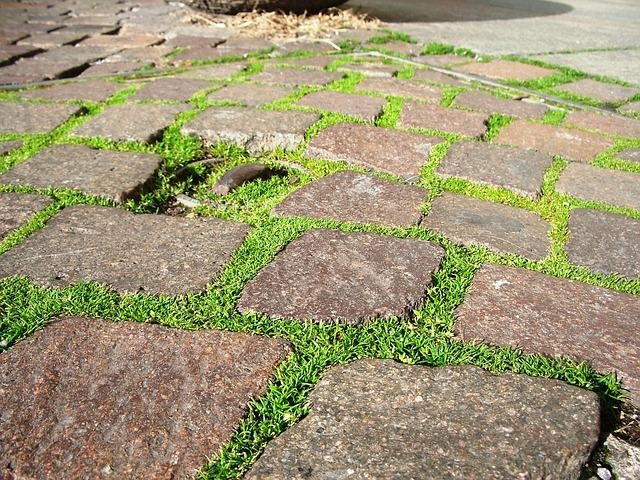
If you walk on the muddy patch to go across the house, there’s no better way than to put a concrete pathway. There are a lot of new pathway designs that you can try, but you can never go wrong with bricks or stones.
Before laying down the concrete or bricks, make sure to level the ground by adding 2 to 3 inches of sand. The sand will absorb the moisture from the ground that allows the cement to stick to the ground properly.
Option #8: Cover Mud with Concrete
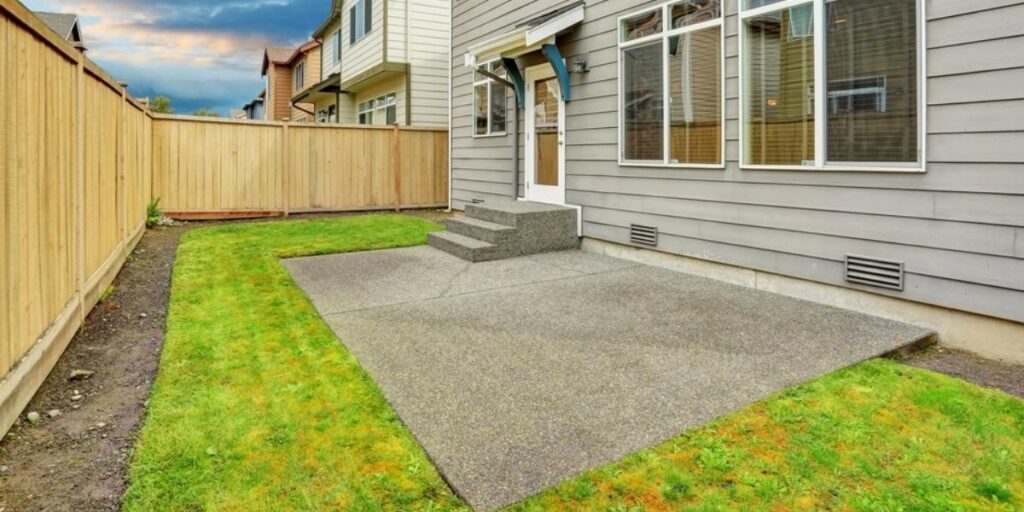
A muddy backyard in a small property can be solved with ease by covering the mud with concrete. Doing so can decrease the accumulation of dust inside your home and make the space useful as another living space like a porch or even a mini court for your kids.
To ensure that the concrete will last, make sure to give it structure by adding bars underneath. This will ensure that the concrete won’t erode when the level of mus changes underneath.
Option #9: Plant Trees
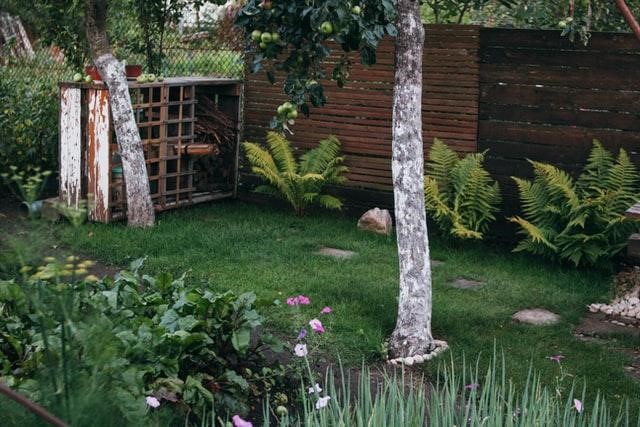
Compared to plants, trees need more water as they grow. A spacious backyard makes it suitable to grow a tree. Aside from absorbing all the water, you can also enjoy the shade that it will provide and appreciate how it can improve the quality of air on your property.
You might like: How To Hang A Swing Between Two Trees
Growing a tree on a muddy patch is near to impossible. You can plant the tree near the muddy patch when it grows the roots will reach the muddy area and do its job in absorbing water.
Option #10: Kitty Litter
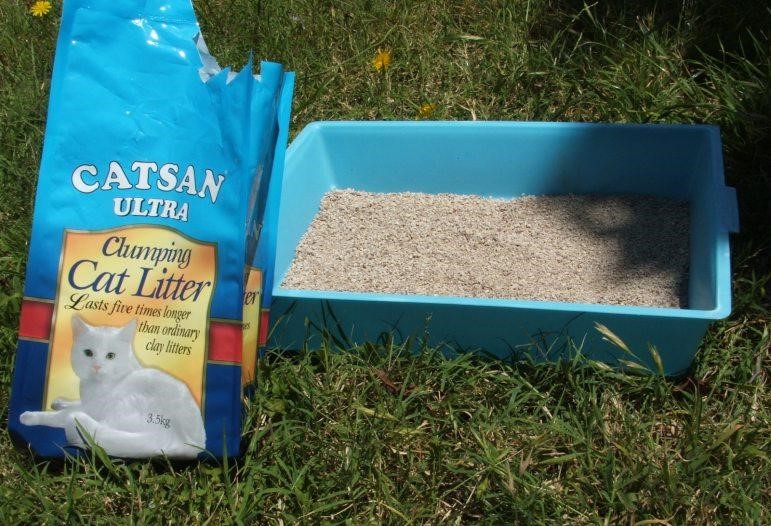
Kitty litter seems to be a solution to mud but it works for small areas. It is meant to absorb water and clump after.
When you use this method to cover or dry the mud in your backyard, make sure to use a filtered mask. The clay substances from the kitty litter can irritate the lungs when inhaled. Spread the kitty litter on the mud and let it sit overnight.
The next day, you’ll see the kitty litter all clumped up and ready to be removed. Remove the clumps and repeat the process if the soil gets muddy again.
This might not be a cost-efficient solution, but it can save you some time in dealing with the mud.
Alternative Ways To Fix a Muddy Backyard
When ground covers are not an option for the mud in your backyard, here are the other solutions that you can try:
1. Lime: Many designers are considering hydrated lime or quicklime as a quick solution in getting rid of the mud. When lime touches the mud, the moisture triggers a chemical reaction that spreads the lime and dries up the water in the mud.
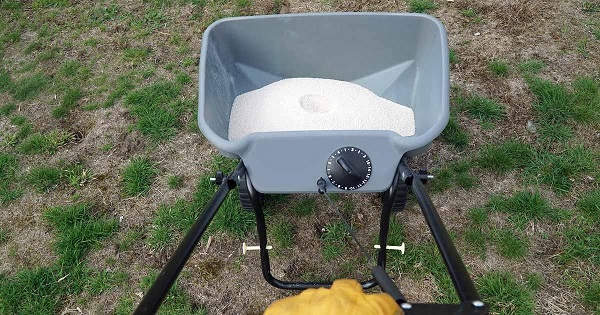
2. French drain: is a type of drainage system that helps redirect the water from muddy areas to a proper drainage system. It is made up of a trench that contains rock and gravel that has a perforated pipe under.
The gravel inside the trench helps the water to run faster down the drain and prevent water retention on the soil. You can buy French drains online and in hardware gardening supply shops.
Tip: How to use a French drain?
1. Dig a trench with enough depth to bury a perforated pipe, then add gravel as the bed for the pipe.
2. The set of holes in the perforated pipe should be placed at the bottom so that it will drain the water as soon as it reaches the holes.
3. Cover the pipe with gravel and test the french rain by using your garden hose to simulate rain.
3. Build an outdoor living space: This is the best option for homes located in zones that receive a lot of rainfall throughout the year and landscapes with low terrain. You can build a gazebo, meditation pagoda, or a deck on top of the muddy patch.
4. Dethatch the land: Thatch is the brown patch in your lawn built by layers of dead leaves and dead roots that accumulated over time. When it rains the thatch becomes spongy and matting and retains the water that causes mud in the soil.
To detach the lawn, use power rakes to break the matting of the grass and resurface the dead grass and roots. Then, sweep the dead grass manually with a rake.
This step allows the soil to breathe and let the grass grow properly. Make sure to remove the dead grass and roots before leaving it.
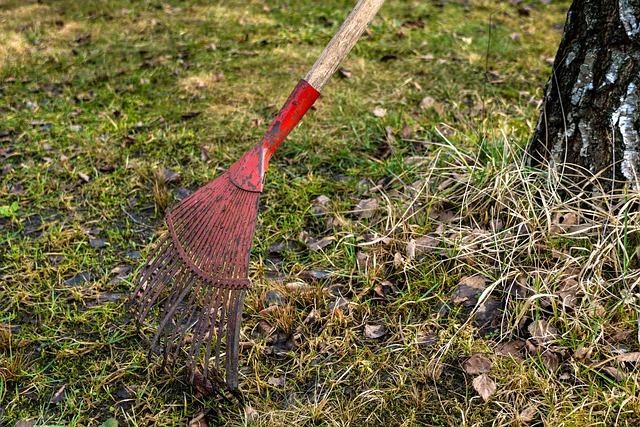
Final Thoughts
Every backyard needs our tender loving care just like what we do with the rest of the house. Learning how to cover up mud not only helps prevent muddy footprints around the house but also improves the look of your backyard.
Once you finish covering the muddy patch, you’ll surely start falling in love with taking care of your yard. We hope that this post inspired you to try different ways in keeping your backyard dry and relaxing enough for you to spend time in it.
If you find this post helpful, share it with your friends who also have mud problems and let us know your experience in the comments section below. We’d love to hear your stories.
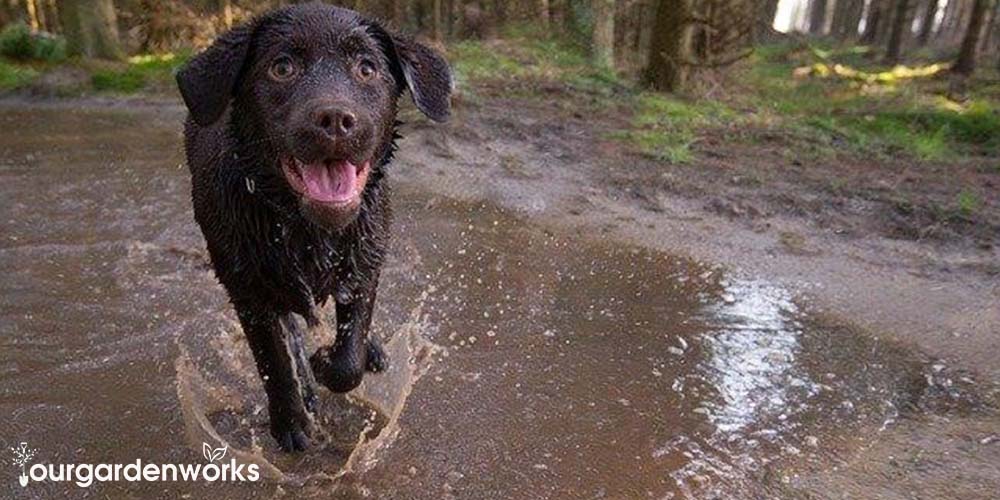
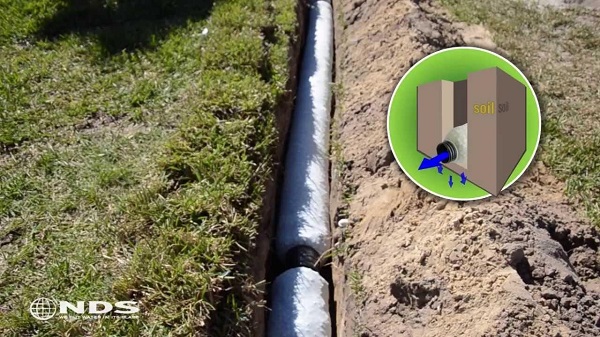
Hi Jeanne..
Thank you for your words of advice. I have 3 dogs that track in mud and I was thinking about using wood chips but laying hay down first and then the wood chips on top of the hay.
Thank you in advance for your response.